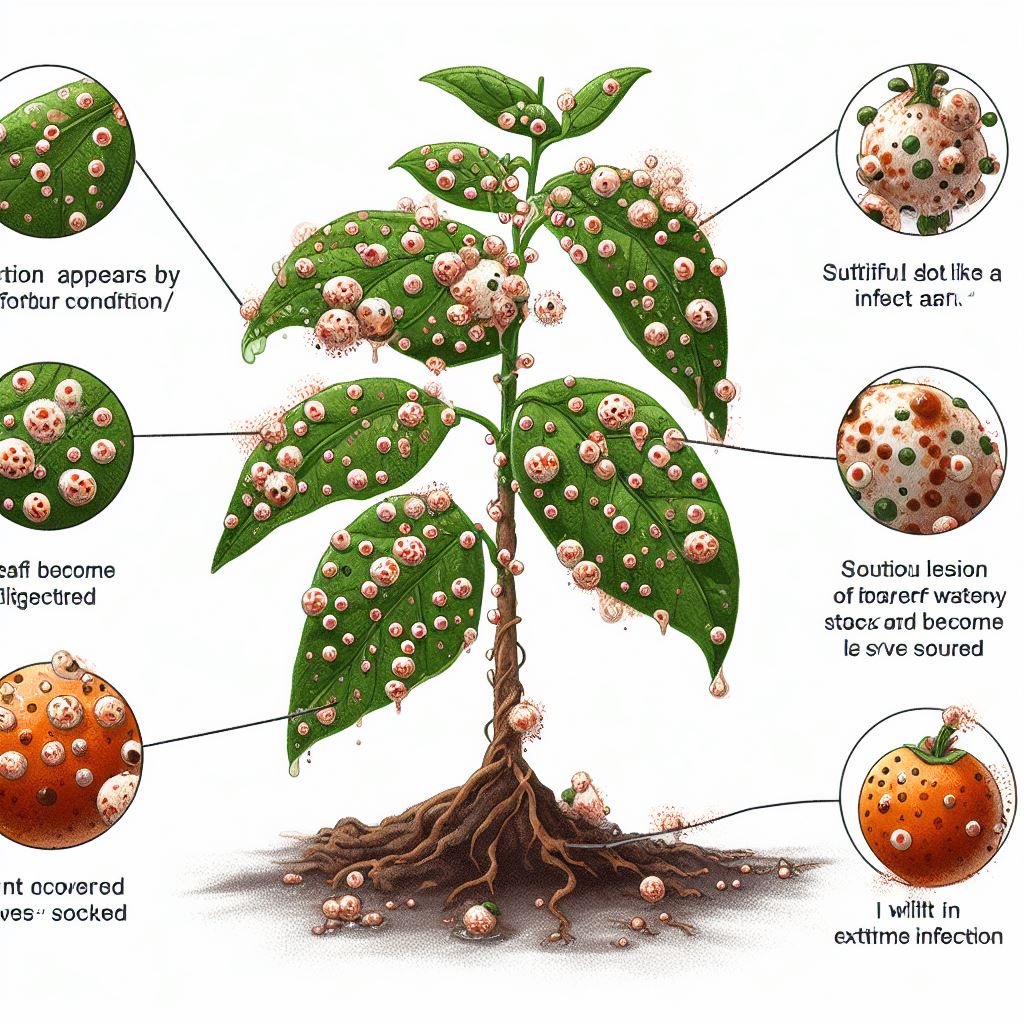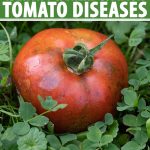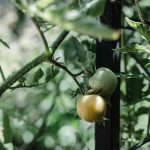Generally, A tomato with blight isn’t harmful or toxic to eat. The blight will not make the tomato unsafe, but it will likely have a bad taste and texture. Before reaching maturity, the presence of a pathogen can render fruits unsuitable for consumption – resulting in an unsightly exterior with uneven surfaces and water-soaked lesions. These blemishes make them unappealing to eat, making prevention essential.
Therefore, It is important to note that tomatoes affected by the first attempt of blight could be eaten, even if the fruits are still firm and look healthy on the outside. The fungus often affects the fruit while still on the vine, and it’s essential to inspect all tomatoes before consuming them. Fruits with soft spots or discoloration should not be eaten as they may have already begun to rot.
Additionally, even if a tomato does not look blighted but has been exposed to the fungus, it is best to avoid eating it as the fungus can spread to other fruits.
To gain insight from an agriculturist, stay with me to discover more information-
What is Blight, And What Causes Blight? (Depends Eat or Not)
I have studied for my B.Sc. Ag. Hons. with a different vegetable infestation, onto them, blight is a more common problem.
Blight is a fungus-like disease affecting many plants and vegetables such as tomatoes, potatoes, peppers, and other nightshade family members. It typically appears in late summer during high temperatures and humid conditions. The fungus produces fruiting bodies known as sporangia which can be spread by wind and rain.
The pathogen called Alternaria solani is the causal organism for this disease. This is a soil-borne fungus that overwinters in infected plants or debris from the previous season. The fungus can survive in the soil for 5 years or more and is spread by splashing water, tools, and shoes.

Types of Blight On Tomato And Symptoms?
Whether the tomato or other vegetables, blight is mainly two types. Both of these fungi can cause problems in the garden but causative is the key difference. Here are the details of these types-
| Early Blight | Late Blight | |
| Causal Organism | Alternaria solani (Fungus) | Phytophthora infestans (Omycetes) |
| Infection Arises | Fruits or Leaves | Fruits, Leaves, or Stems |
| Time of Infection | Early in the season | Late in the season |
| Conditions Favouring Disease | Humid and warm weather | Cool and wet weather |
What Does Tomato Blight Look Like (Symptoms )? ( Flow Chart)
Infection Appears by Small Dot Like On The Surface > Leaves/ Stems/ Fruits > Favorable Condition > Increase Infected Area> Several Lesion Are Coalased Together> Leaf Become Blighted> ( In Severe Infestation Leaf May Fall and Fruit Covered With Brown Watery Soaked )> Plant May Wilted In Extreme Infestation.
Here is an image:

Image Of Blighted Tomato:
How Can You Eat Blighted Tomato?
From my perspective, I can give you the answer in two ways.
If the blighted tomato only starts showing its symptoms of infection, and the infection has not spread to other parts of the plant, then it is safe for consumption. The tomato should be picked off the vine and washed thoroughly before eating.
If the blight has advanced to other parts of the plant or if the tomato is overly soft or discolored due to infection, then the tomato should not be eaten.
There is too great of a risk that the infection has already spread throughout the tomato and could cause food-borne illnesses if consumed.
If you’re debating whether or not to consume a blighted tomato, several factors should be taken into consideration.
1) Maturity of the Tomato
Ripe tomatoes should be avoided at all costs if they are showing signs of infection as they are more likely to contain spores or toxins that could cause food-borne illnesses.
2) Cleanliness
When it comes to cleaning tomatoes that have been infected with blight, it is important to take certain steps in order to minimize the risk of further contamination.
The tomato should be washed thoroughly with warm water and a brush or cloth to remove any dirt and debris from the surface.
Additionally, if possible, use a mild bleach solution (5-10% chlorine bleach) to disinfect the tomato.
3) Cooked
“Prevention is better than cure”. So why are you risking yourself and your family? Cooked your tomato before eating.
Cooking the tomato will kill any toxins or spores that might be present, therefore making it safe for consumption.

Is Eating Raw Blighted Tomato Safe?
It is ill-advised to consume a raw, unripe, or overripe blighted tomato as it can pose health hazards. Because blight is a fungal disease, consuming the tomato can cause digestive upset and food poisoning.
Additionally, eating raw tomatoes that are infected with blight may also increase the risk of infection in other parts of the body especially if you are allergic. Therefore, it is best to avoid consuming any blighted tomatoes unless they have been cooked.
Can I Eat Tomato From Disease Plants?
Tomatoes from plants that have blight or any other illness can still be consumed unless it deeply affects the fruits. Research confirms that, as long as tomatoes look healthy, they are safe for consumption.
Wrap-Up:
To be safe, it’s always wise to err on the side of caution. if you feel any problem associated with eating these tomatoes, please consult your doctor immediately.
Otherwise, as a general consumer, you can consume the tomato after washing it thoroughly and cooking it to kill any toxins or spores present.

I am a graduate of Bangladesh Agricultural University, where I delved into various agricultural disciplines, equipping me with a profound understanding of agriculture. Beyond academics, I have hands-on experience in gardening and crop cultivation. My passion is to embrace sustainable farming and horticulture. With a BSc in Agriculture, I am dedicated to promoting environmentally conscious and efficient agrarian practices.
Bachelor of Science (BSc) in Agriculture (Hons.)
Master of Science. (Sustainable Agriculture & Food Security ) (MS)
Bangladesh Agricultural University



![Can You Eat Split Tomatoes? [ Expert’s Recommendations] 2-31](https://broadpick.com/wp-content/uploads/2023/11/2-31-150x150.jpg)
